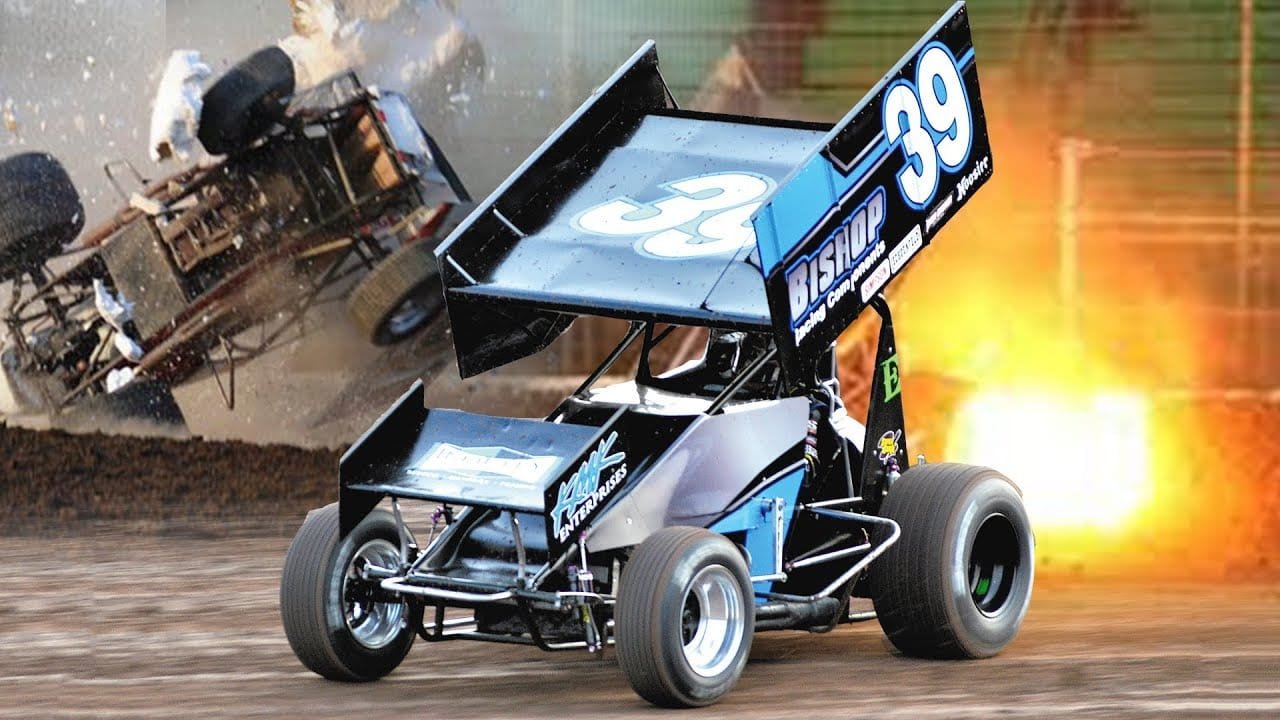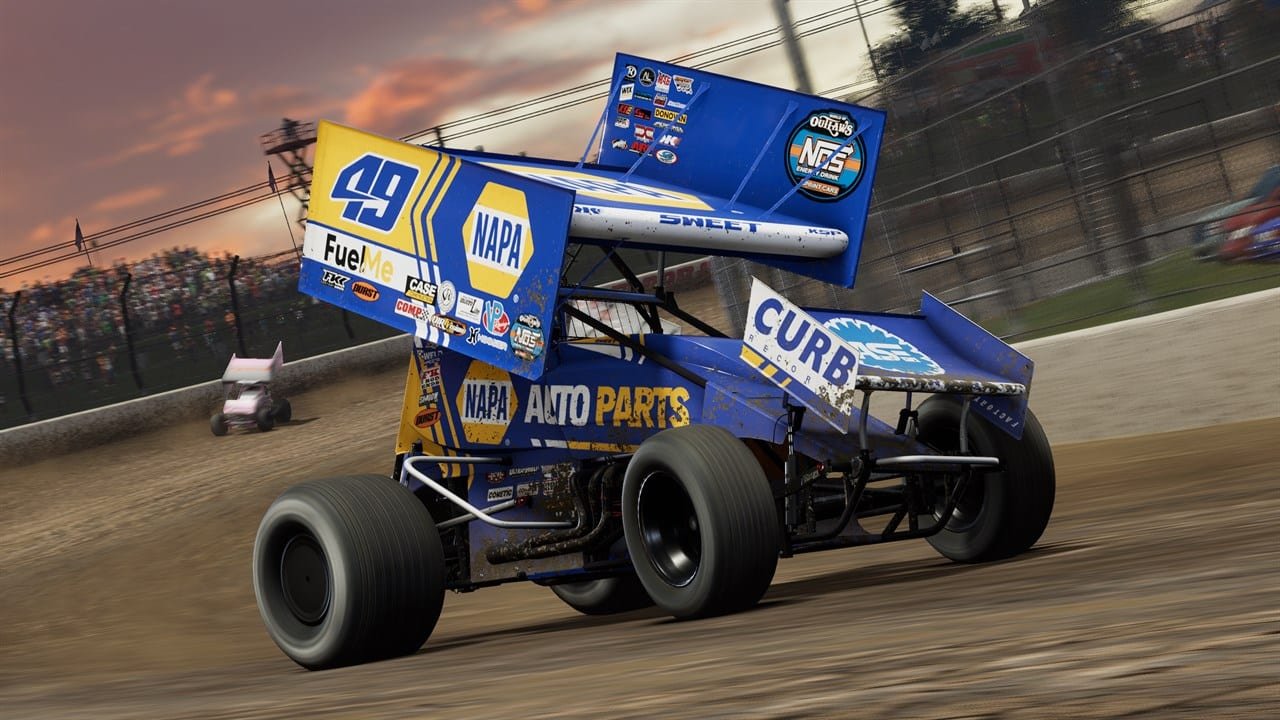Sprint Car Racing: The Ultimate Dirt Track Challenge

There is snooping of sprint car racing adventure when the matching of racers and the whole process of the way go is going on daily and fans’ spirits are never put down. I had never been a part of racing, I was only a spectator. No question, I am a fan of short cars. They are ridden in line with high acceleration and deceleration. The roar of car engines, plus the drivers’ steering under significant pressure, is irresponsibly satisfied. The sport was started in the minor locales themselves and later, a lot of individuals were dragged by it. Whether you are a casual or an avid fan like me, sprint car racing is an edge-of-your-seat experience that is unparalleled.
How to Play Sprint Car Racing
Participating in sprint car racing, whether as a driver or enthusiast, requires a solid understanding of the fundamentals. Here’s a guide to getting started:
1. Understanding the Basics
I’ve been present on numerous occasions when sprint cars run the track. All of these ovals are different in length, but most are somewhere between one-fourth of a mile and a half of a mile. As a viewer, I’ve seen drivers competing in races, a few short-speed qualifiers noted for a series of races, and the main event. Then the real struggle starts? Is to reach first place, which is feasible as descriptions of these vehicles as being nimble and powerful vehicles that will affect the whole world, but can also effectively be controlled. The whole thing is that most of these races are held at the dirt or the clay courses. That, in turn, adds a brand new dimension to which the drivers have to be not only fast, but also responsive thinkers. It’s the hardest part for both man and machine alike!
2. Acquiring a Sprint Car
I have been to quite a few sprint car tracks before. The interesting thing is that you should be in a specific vehicle to take part in a racing event. They are either the ones with wings or those without. The winged ones have big inhibitors that help keep the car in place and help it not swerve on the road. The un-winged ones? They are harder – it is all on the driver’s skill to manage them. Beginners like me, the instance I, first experienced the situation have to fly low. Search for the 305 sprint car as this is the beginners’ grade. Once you get the idea, you can move to the model that allocated a more powerful 360 engine to the 410 cars. Prove me wrong, the voyage from 305 to 410 is quite a big deal.
3. Safety Gear
Safety is paramount in sprint car racing. Essential gear includes:
- Helmet: A full-face helmet with a proper safety rating.
- Fire-resistant suit: Protects against heat and flames in the event of a crash.
- Gloves and boots: Fire-resistant materials provide added protection.
- Hans device: Prevents neck injuries by stabilizing the head during impacts.
- Roll cage: All sprint cars are equipped with a roll cage to protect the driver in case of a rollover.
4. Joining a Racing Team or Series

Joining a team or series provides structure and access to resources. Many local tracks have sprint car racing leagues that welcome newcomers. Being part of a team allows you to learn from experienced crew members, understand car setups, and gain valuable track time.
5. Learning Track Dynamics
Dirt track racing requires drivers to master unique techniques such as:
- Sliding through corners: Maintaining control while skidding around turns.
- Throttle control: Balancing speed and grip on loose surfaces.
- Reading the track: Understanding changes in surface conditions during a race.
Practice and experience are key to honing these skills.
6. Practicing and Testing
Before entering competitive races, spend time practicing on local tracks. Testing sessions allow you to familiarize yourself with your car, experiment with setups, and build confidence. Work on lap consistency and gradually increase speed as you become more comfortable.
7. Entering Races
Once ready, register for local races. Many tracks host weekly events where beginners can compete in lower divisions. Follow all rules and regulations, including pre-race safety checks. Arrive early to set up, inspect your car, and participate in driver meetings.
8. Building a Support Team
Successful sprint car racers rely on a strong support team. This includes mechanics, spotters, and crew members who assist with car maintenance, strategy, and logistics. Even at the amateur level, having reliable support can make a significant difference.
9. Embracing the Community
Sprint car racing is as much about the community as it is about the competition. Engage with fellow racers, fans, and track officials to build relationships and gain insights. The camaraderie in the pits is one of the sport’s most cherished aspects.
The Cars

I’ve driven sprint cars. Sprint cars are not normal racers. They are made only for speed. They can drive on dirt and pavement at the same speed as a fly. It’s crazy how light they are – below 1,400 pounds. It’s like strapping a jet engine to a go-kart.
The wings are the things that sprint cars have that make them very distinctive. They’re more than just a fashion statement. Most of the time, they are the large fins on top and at the back of the car, which keep the car from hesitating in the corners and from turning the car over. However, one tiny fact is that some of the sprint cars are not equipped with wings. Those are the ones that can make you have a heart attack. The drivers are those who have to handle them on the track, and which one of us can watch it without looking away? It’s a real pure race.
The Tracks
Sprint car races are commonly held on oval tracks ranging from a quarter-mile to a half-mile in length. These tracks, often made of dirt or clay, create unique challenges for drivers as they navigate constantly changing surface conditions. Dirt tracks in particular require a special kind of skill; as the race progresses, the surface wears down and develops grooves or cushions, altering the grip levels and making each lap a test of adaptability.
In addition to dirt tracks, some sprint car events take place on paved surfaces, though dirt remains the dominant arena for the sport. The unpredictability of loose dirt and the ever-changing conditions force drivers to rely on instinct and split-second decision-making. Each track has its personality, and seasoned drivers often develop a deep familiarity with their favorite circuits, knowing how to handle each turn and straightaway.
The Drivers
Sprint car drivers are the madcap of motorsport. I have witnessed them almost colliding off the track, but can you imagine they missed the track wall just by a few millimeters? Their supernatural reaction time is the key factor in their success, which is a perfect blend of speed and control. They not only go fast; they are great performers- who pull those horses on the canvas of a dirt track. Their potential is showcased so effectively that I almost get the feeling of goosebumps whenever I visit the race track.
The sport has long been a proving ground for motorsport legends. Many professional drivers, including NASCAR icons like Jeff Gordon and Tony Stewart, began their careers in sprint car racing. This connection to major racing leagues highlights the sport’s importance as a training ground for future stars. However, sprint car racing isn’t just a stepping stone; many drivers dedicate their entire careers to this discipline, drawn by its unique challenges and community.
The Fans
Indeed, it is far from the imagined world of remote-controlled car action, which is the first thing the, then-tiny me witnessed at the track. However, to what extent can we give these races communities if Dartster, in terms of reasons, wants to keep them as separated as possible? This is a pointer that was missed by me so far, that the heart of sprint car racing is still the one that I have not found a way to catch. What I love most about the whole thing is the fact that drivers and LANs are really simple and easy to reach out to. Can you tell me if I can go up to the arena in a polo booth? I don’t think it is a good idea.
My own experience is that community spirit is the most important virtue in sprint car racing. Time and again, I’ve been at races where I could meet drivers, take a session pit that technicians would do the calibration of, and lastly, chat with the pit crews. This intimacy is the reason that the fans come back over and over, through the generations. Sprint car racing is a sport that is a racer and a spectator only like me, that offers a mix of both, excitement and challenge for the most memorable imaginable. A particular world that is open to anyone brave enough to race on the dirt track, no matter the background.



